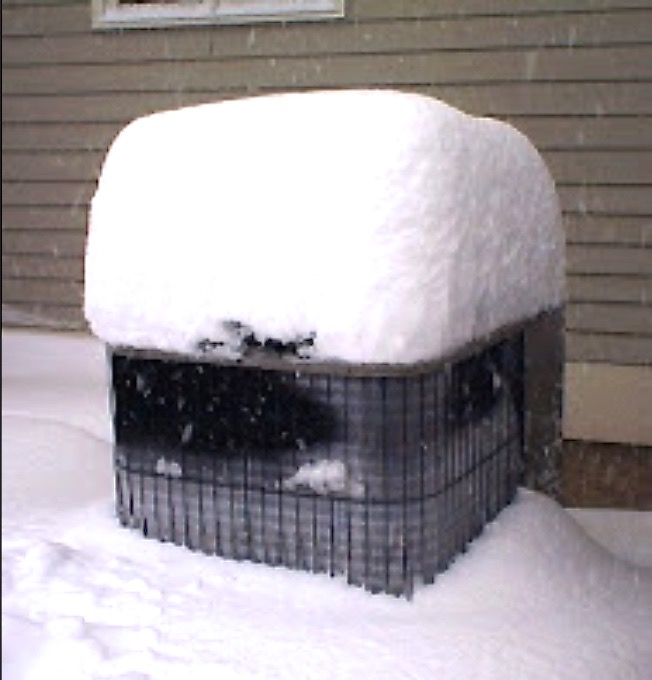The image at left may cause you to think this is an inactive air conditioning condenser in winter months. It is not. This is an air-source heat pump (ASHP) struggling in the heating mode. It’s a vertical discharge unit that normally pulls air in from the sides and discharges it vertically.
RESTRICTED BY SNOW
As you can see, the discharge is totally blocked with snow and the sides are compromised by snow build up. For equipment that is dependent upon great volumes of air passing through its perimeter coils and exiting upward, this one is seriously hampered. Evidence of cold refrigerant attempting to extract heat from the outdoor air is seen by the frost over much of the coil fins. When cold/damp air hits cold coils, frost forms and slows the passage of air. Areas of non-frost seen here are probably blowing air laterally outward that would have exited the cabinet vertically if only the snow wasn’t piled deep on top of it.
DEFROST CYCLES
There is less heat that can be tapped from outside air during snowy or clear cold days. Outdoor coils in air like this also require periodic defrost cycles where the refrigerant flow is temporarily reversed to melt ice that forms. If it’s very cold outside, melted frost that’s become water can re-freeze in 
more solid form (ice) 
which can totally block lateral air movement. Because the thermostat is still calling during defrost for interior heat, electric resistance coils will need to be energized inside of ductwork in order to keep distributing heat to the interior and end the thermostat’s call.
Outdoor siting and difficult extremes of temperature and moisture take useful life away from ASHPs. They also can be noisy for occupants and neighbors, and they consume far more power than geothermal heat pumps (GHPs). If the outdoor units are not located in private spaces, there could be damage from vandals. Debris from above, interior insects, and encroaching vegetation can all reduce the performance of ASHPs. GHPs are not susceptible to any of these factors, and because their underground heat exchangers work in a thermally stable environment above freezing, they run more efficiently than ASHPs on any day of the year and are immune from vandalism.
—Bill Martin, President of California Geothermal Heat Pump Association (CaliforniaGEO.org)
https://www.californiageo.org/geo-heat-pump-applications/geo-heat-pumps-better-than-air-source-heat-pumps/
Share This Article!
Newsletter
Subscribe to our newsletter and stay updated on the latest.
Your email is safe with us, we don’t spam.

